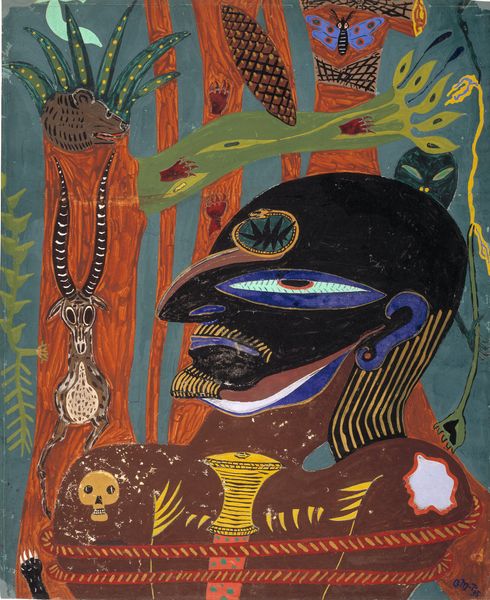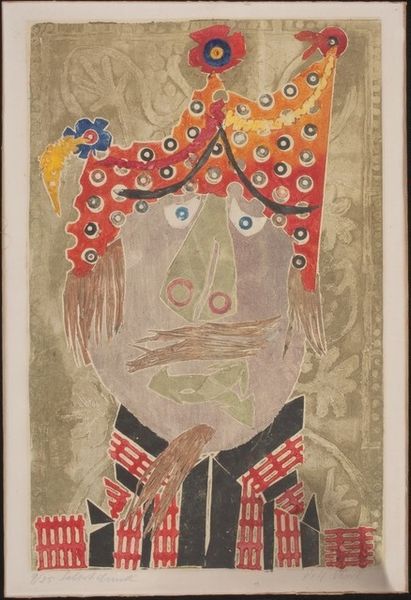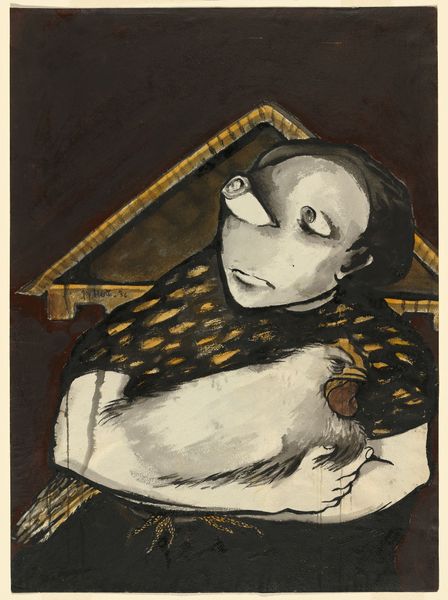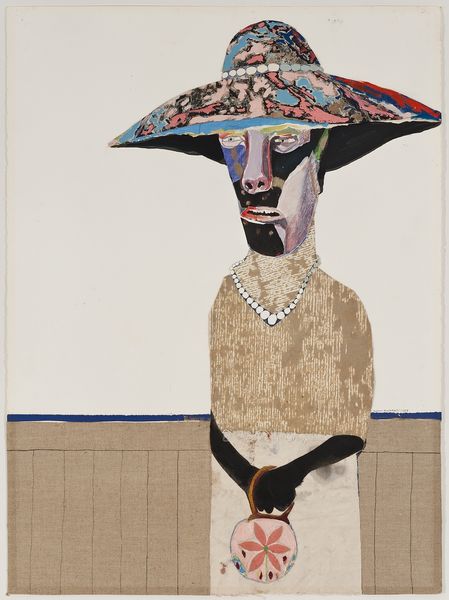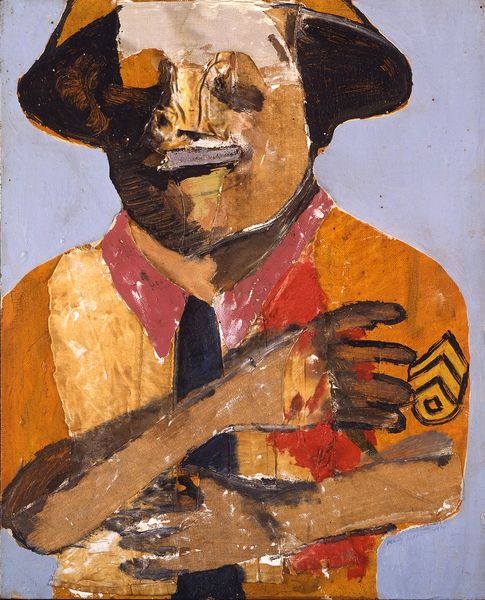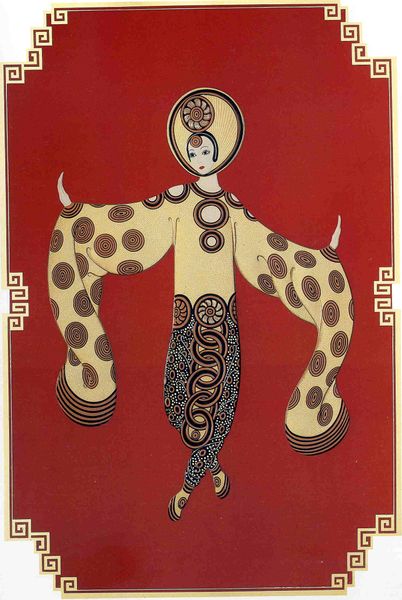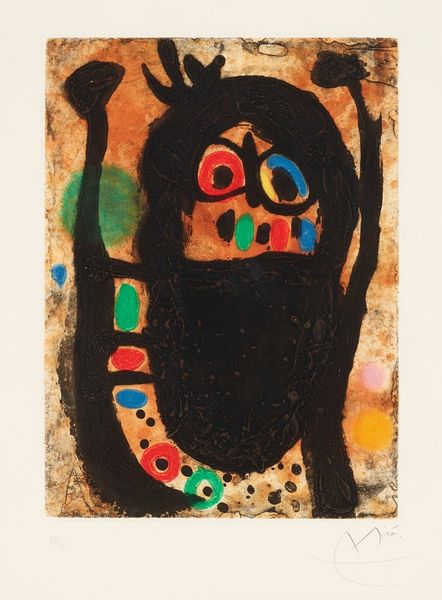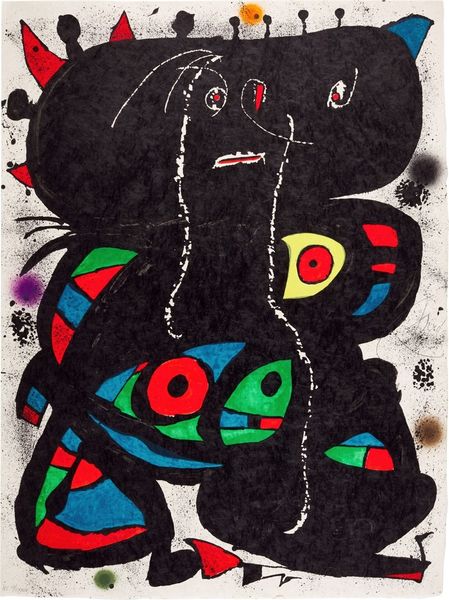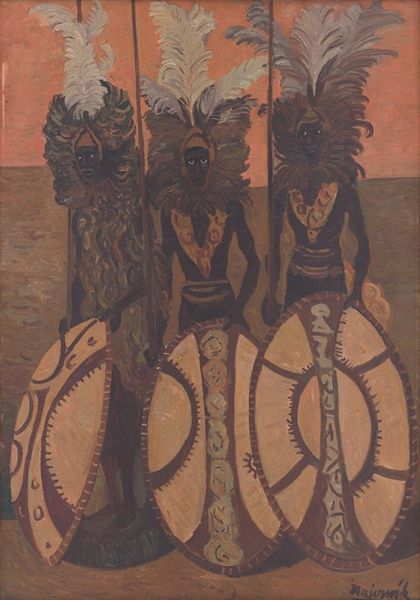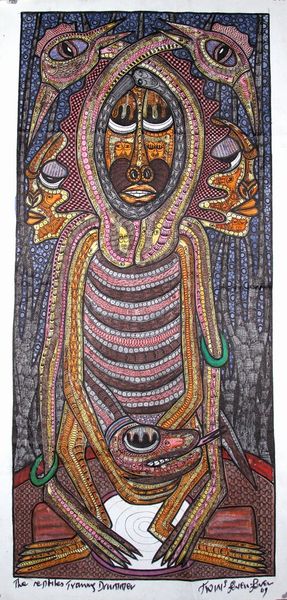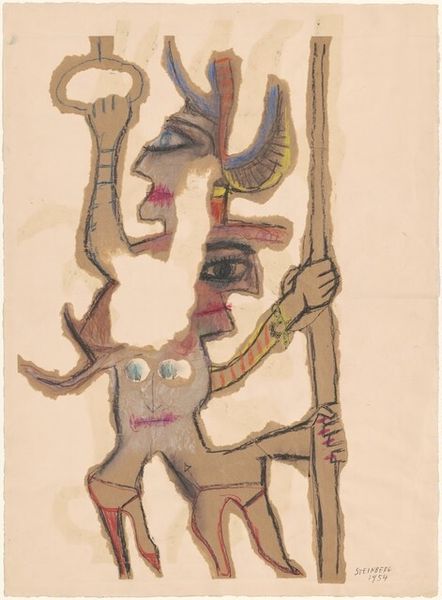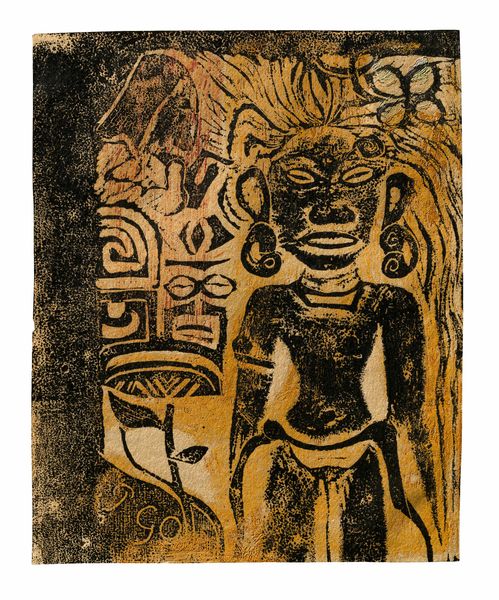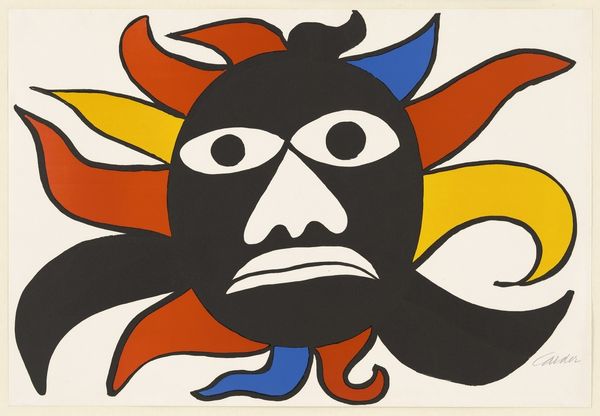
oil-paint
#
portrait
#
oil-paint
#
pop art
#
oil painting
#
folk-art
#
naive art
#
portrait art
Dimensions: 124.5 x 92.7 cm
Copyright: Fair Use
Curator: "Buda Man" by William Hawkins presents such an intriguing blend of figuration and cultural iconography. The piece is rendered in oil paint and combines a folk-art aesthetic with pop art sensibilities, resulting in a striking portrait. Editor: My immediate response is one of surprise. It’s got a raw, almost jarring quality, like a snapshot from a very peculiar dream. The color palette, especially the red border and the stark blacks and whites, creates a kind of unsettling energy. Curator: Indeed. Hawkins’ work is profoundly informed by his position outside the mainstream art world. Born in rural Kentucky in 1895, his artistic output reflects a vernacular aesthetic, largely unconcerned with academic art traditions. It can be contextualized within broader narratives of self-taught artists pushing the boundaries of representation. Consider, too, how museums at this time wrestled with the concept of "outsider art." Editor: I'm particularly interested in that negotiation of the sacred and the mundane, the high and the low. I find myself wondering how Hawkins, drawing from both the figure of Buddha and contemporary visual languages, engages with concepts of authority. What do you think this combination suggests about the broader cultural politics surrounding spirituality and image-making? Curator: It’s interesting to position his choices within his personal narrative—Hawkins was known for his devout religious beliefs, and images from popular culture are frequent in his output. His use of accessible imagery perhaps serves as an intentional disruption of preconceived notions about art. This could certainly lead to conversations about the socio-economic dimensions of art access. Editor: Right, so thinking about accessibility opens it to an intersectional approach, doesn't it? It reminds me that visual language can be used to both obscure and democratize meaning, shaping cultural narratives in really potent ways. I find that truly engaging! Curator: I agree. Examining “Buda Man,” it’s difficult to not engage with the dialogues concerning tradition and change, marginalization and the politics of visibility within the museum walls. Editor: Absolutely. It shows that visual engagement can really reshape collective stories.
Comments
No comments
Be the first to comment and join the conversation on the ultimate creative platform.
